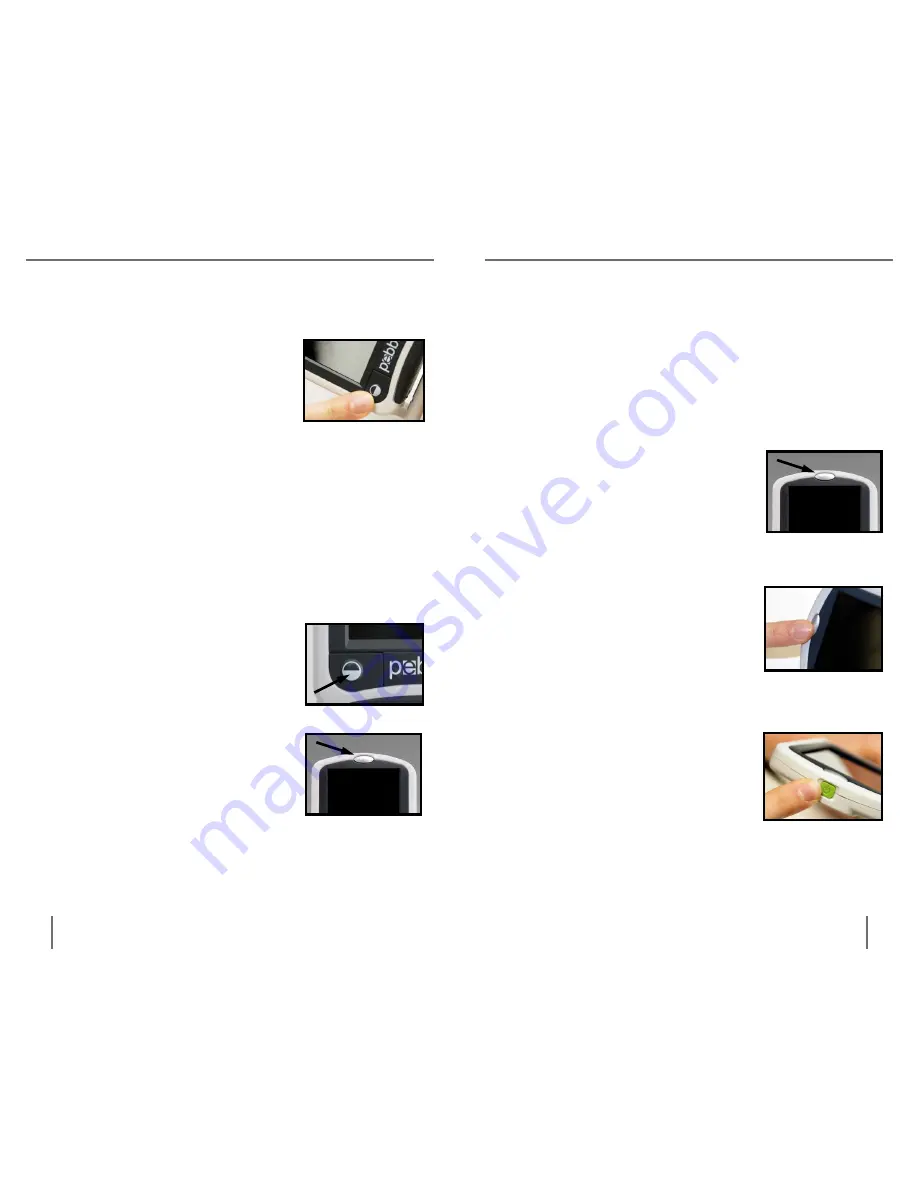
13
12
C
hapter
3
u
sing
the
p
ebble
C
hapter
3
u
sing
the
p
ebble
Selecting the Viewing mode:
Use the following procedure to select the viewing
mode of the image on the LCD display:
1) Find the MODE button located
on the face of your Pebble
(See Figure 1).
2) Press the MODE button to
continuously cycle through the 6 pre-set
viewing modes. To change your viewing mode to
any of the 28 available follow instructions below.
Changing pre-set viewing modes:
Your Pebble has 4 set viewing modes (full-color,
black & white, enhanced positive, & enhanced
negative) and 2 that can be changed to any of the 28
available. Use the following procedure to select
between the 28 available color modes:
1) Toggle the Pebble with the
MODE button
(See Figure 1)
to the
color select mode #1 or #2.
2) While holding down the
FREEZE button
(See Figure 2),
toggle through the 28 color select
modes by pressing either the ZOOM
(+/-) or MODE button.
Once you
identify the desired color select
mode, release the FREEZE button.
The Pebble will now store this color
select mode until changed.
3) Repeat step 2 to change the pre-set color select #2.
Figure 1
Figure 1
Freezing an image (Snapshot function)
If desired, you can take a temporary snapshot
(freeze) an image on the display. You can also adjust
the size and color modes after freezing an image.
This feature is quite useful for reading price tags,
prescriptions or other information that may need to
be temporarily captured. Use the following procedure
to take a snapshot (freeze) the image on the display:
1) Find the FREEZE button
located on the top face of your
Pebble
(See Figure 1).
2) Press the FREEZE button to
capture the image
(See Figure 2).
Pebble will sound a short
confirmation tone (“beep”) when
the image is captured. After
capturing the image, you can
adjust the size or color modes as
described previously on pages 11
& 12.
3) Press the FREEZE button
again
(Figure 2)
to exit and
resume normal operation of your
Pebble. Turning off the power of
your Pebble will also clear the
frozen image
(See Figure 3).
Figure 1
Figure 2
Figure 2
Figure 3



















